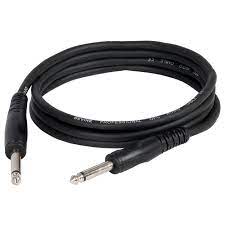Audio cabling
In the field of electrical signals, understanding audio cabling strategies and their effects on signal preservation is essential. Proper cables play a crucial role in maintaining signal integrity. Explore the features and application of cables with us in this article.
Audio Cabling: Theory
•Electrical behavior
Electrical signals, ubiquitous in many applications, vary in amplitude, frequency and phase. Their behavior is influenced by parameters such as voltage, intensity and resistance.
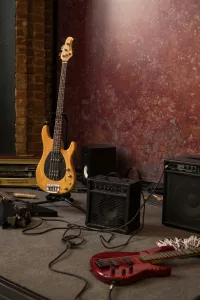

As signals pass through electronic components, they undergo transformations, often described by mathematical equations such as Ohm’s law. Additionally, electrical signals can exhibit linear or nonlinear behaviors depending on the relationship between the input and output.
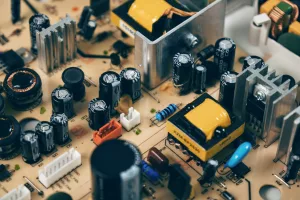

In the context of optimization, understanding electrical behavior is crucial to determining how signals respond to noise and interference. A thorough knowledge of these characteristics facilitates the implementation of targeted strategies to minimize disturbances and preserve the quality of electrical signals in different applications.
•Electrical levels
Low-voltage signals, such as microvolts from sensors, are sensitive to spurious noise and require advanced processing methods to preserve their integrity. In contrast, higher voltage levels, such as those used in power distribution, require robust insulation to avoid losses and failure risks.
Each voltage range poses specific challenges. For example, line-level signals in professional audio require protection against electromagnetic interference. Likewise, microphone level signals must be amplified carefully to avoid distortion.


Understanding these different electrical levels makes it possible to apply appropriate strategies. This makes it possible to improve the quality of signals in various applications, taking into account the constraints specific to each range.
Parasites
•Theory
Electromagnetic interference, such as unintentional radio frequency radiation, results from the uncontrolled emission of electromagnetic signals by electronic devices. External interference, from external sources, such as telecommunications signals, can enter systems and alter signals.
Within a system, internal interference can arise from electronic components generating spurious signals. These phenomena are often influenced by circuit design, connections and induced magnetic fields.
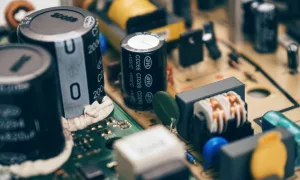

Understanding noise theory is therefore essential to identify the causes of interference and to select appropriate noise reduction strategies. By adopting techniques such as electromagnetic shielding and filtration, it is possible to minimize the impact of interference and therefore preserve the overall quality of electrical signals.
•Induction
Induction is a phenomenon where variations in a magnetic field cause unwanted currents in neighboring conductors. This can therefore introduce potentially disruptive parasites.
Induced stray currents can degrade signal quality by causing loss of fidelity and interference. These effects are particularly notable in low voltage systems, where signals are therefore more sensitive to disturbances.


To counteract induction noise, methods such as the use of twisted audio cabling or magnetic shielding are essential. Additionally, the application of specific noise filters can help attenuate induced electric power, thereby improving signal quality.
A thorough understanding of the mechanisms of induction and its effects on electrical signals is crucial for choosing the correct induction noise reduction solutions, ensuring optimal performance in various applications.
•Radio interference
Radio interference results from the propagation of electromagnetic waves in space. They can therefore come from sources such as radio transmitters and wireless devices.
This interference can alter electrical signals by introducing unwanted variations in voltage or intensity. Parasitic electromagnetic waves, when superimposed on the original signals, can cause distortions, transmission errors and an overall degradation of signal quality.
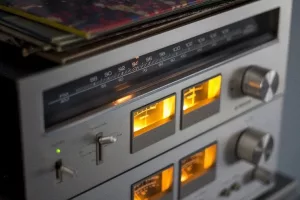

To mitigate radio interference, techniques such as electromagnetic isolation and the use of directional antennas are commonly employed. These measures therefore help to preserve the integrity of electrical signals by minimizing radio interference.
Understanding the mechanisms of radio parasites is essential to choose appropriate approaches to reduce their impact. This therefore ensures optimal performance in environments saturated with wireless signals.
Audio balancing and cabling
•Electronic symmetrization
Asymmetric signals, sensitive to interference, are subject to distortions that compromise their integrity. Electronic balance, a common technique, consists of transforming these signals into symmetrical signals, more resistant to interference.
Twisted cables are an example of implementing electronic balunization. By twisting the conductors of a cable, the positive and negative signals are brought closer together. This therefore makes it possible to reduce induced interference. Differential circuits, another approach, amplify the difference between positive and negative signals. This therefore strengthens resistance to parasites.
Electronic symmetrization improves signal robustness, reducing losses and distortions. In areas such as professional audio and data transmission, this technique plays a crucial role in optimizing electrical signals and preserving their quality during transfers.
•Symmetrization on transformer
Transformers, as passive elements, provide a robust method for signal balunization.
The fundamental principle of balunization via transformer lies in galvanic isolation. By electrically isolating the primary and secondary circuits of the transformer, this technique prevents the propagation of parasites and interference. Additionally, transformers are capable of amplifying or attenuating signals. This can therefore be used to adjust the quality of transmissions.
Freesong analysis
FreeMastering Sample
Application
•Microphone Level
Due to its low voltage, the microphone level remains extremely vulnerable to interference. Thus, the use of essentially symmetrical audio cabling with shielding becomes imperative.


•Speaker Level
Speaker levels (HP) reach around 100 volts, making noise negligible compared to signal amplitude.


When it comes to shielded audio cabling, the braid shield acts like a coil. Whether the signal could induce a current in this coil has not been explored. Although this situation is not relevant for micro or line levels, it becomes significant for HP levels. Therefore, the use of a shielded cable should be avoided.
•Line Level
The moderate voltage levels characteristic of line signals make them prone to noise and electromagnetic interference. This therefore requires quality preservation measures.


The use of shielded audio cabling proves to be an effective solution to reduce external interference. The use of balanced cables is not obligatory.
Types of analog cables
•Audio cabling: RCA (Radio Corporation of America)
RCA cables are widely used for unbalanced analog connections for the general public.
They are often used in HIFI over short distances for signal transmission.
When choosing RCA audio wiring, it is important to consider the length of the cable, as excessive lengths can result in signal noise. You must therefore ensure that the RCA cable is on a very short connection.
•Audio cabling: TS cable (TIP / SLEEVE)
TS cables are commonly used for mono-audio connections. For example, electric guitars or bass guitars, where simple signal transmission is required.
TS cables have two conductors: the tip (Tip) and the sleeve (Sleeve). They are ideal for mono applications, carrying the audio signal from a source to a destination. However, due to their simple design, TS cables are therefore more susceptible to noise and electromagnetic interference.
When purchasing TS cables, it is crucial to consider factors such as the length of the cable, the quality of the materials used and the strength of the connectors. Good quality cables, with careful attention to connectors and possibly additional shielding options, can therefore help to minimize the unwanted effects of noise and ensure optimal sound transmission.
Sizes: -1/4″ -> Best shielding
-1/8″ -> Used for phone/laptop inputs…
•Audio cabling: TRS cable (TIP / RING / SLEEVE)
TRS cables are frequently used for stereo or balanced audio connections. They offer a solution for transmitting complex signals.
TRS cables have three distinct conductors: TIP / RING / SLEEVE. They are particularly useful for carrying stereo signals. For example, those generated by electronic keyboards or audio interfaces for example. Additionally, TRS cables therefore allow balanced connections, where positive and negative signals are transmitted separately to reduce interference.
When selecting TRS cables, factors such as length, quality of connectors, and possibly, degree of shielding, must be taken into consideration. Opting for superior quality cables, with robust materials and connections, therefore guarantees audio transmission without major disturbances, which contributes to the preservation of sound quality in various applications.
•Audio cabling: XLR cable
XLR cables are widely used for professional audio connections. They offer a robust solution for transmitting balanced signals.
XLR cables consist of three conductors: pin 1 (ground), pin 2 (positive signal), and pin 3 (negative signal). This design promotes balanced connections, which therefore significantly reduces interference and disruption over long distances.
These cables are ideal for professional applications such as microphones, mixing consoles and high-end audio equipment. Their robust design, combined with locking connectors, therefore ensures a reliable connection, even in demanding environments.
When choosing XLR cables, the quality of materials used and the length of the cable should be considered. Opting for high-quality XLR cables and using well-designed connectors therefore guarantees stable, high-fidelity audio transmission, essential for professional audio performance. They are used for symmetrical connections.
•Audio cabling: SPEAKON cable
SPEAKON cables are widely adopted for professional audio connections, especially for PA systems and loudspeaker equipment.
SPEAKON cables are characterized by their robust and secure design, with specific lockable connectors that prevent accidental disconnection. They are therefore frequently used to connect speakers to amplifiers in live performance or PA environments.
The SPEAKON cable lock design ensures a stable and secure connection. They eliminate the risk of signal loss during performances. The connectors are available in different configurations, such as 2-pin, 4-pin and 8-pin versions, thus meeting the specific needs of audio systems.
When choosing SPEAKON cables, it is essential to consider equipment power requirements and appropriate connector configurations. By choosing quality SPEAKON cables and using them appropriately, it is possible to ensure reliable and efficient connections between audio equipment and speakers.
•Audio wiring: Banana cable
Banana cables are commonly used to make audio connections between equipment. They offer a practical and reliable solution for home audio systems.
Banana cables are distinguished by their specific banana-shaped connectors. They are designed to easily insert into the terminals of audio equipment such as amplifiers and speakers. They enable quick and secure connections, eliminating the hassle of stripping wires and uncertain connections.
These cables are particularly popular in loudspeaker setups, where they ensure a firm connection and lossless signal transmission. Banana cables are often used in home theater systems.
In conclusion, the judicious selection of electrical cables is fundamental to guaranteeing signal quality in various applications. Well-chosen cables adapted to each context help minimize interference and parasites, thus preserving the integrity of electrical transmissions. Making the right cabling choices will optimize audio and electrical performance, ensuring an optimal experience in different areas.



